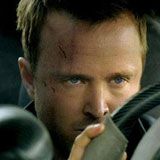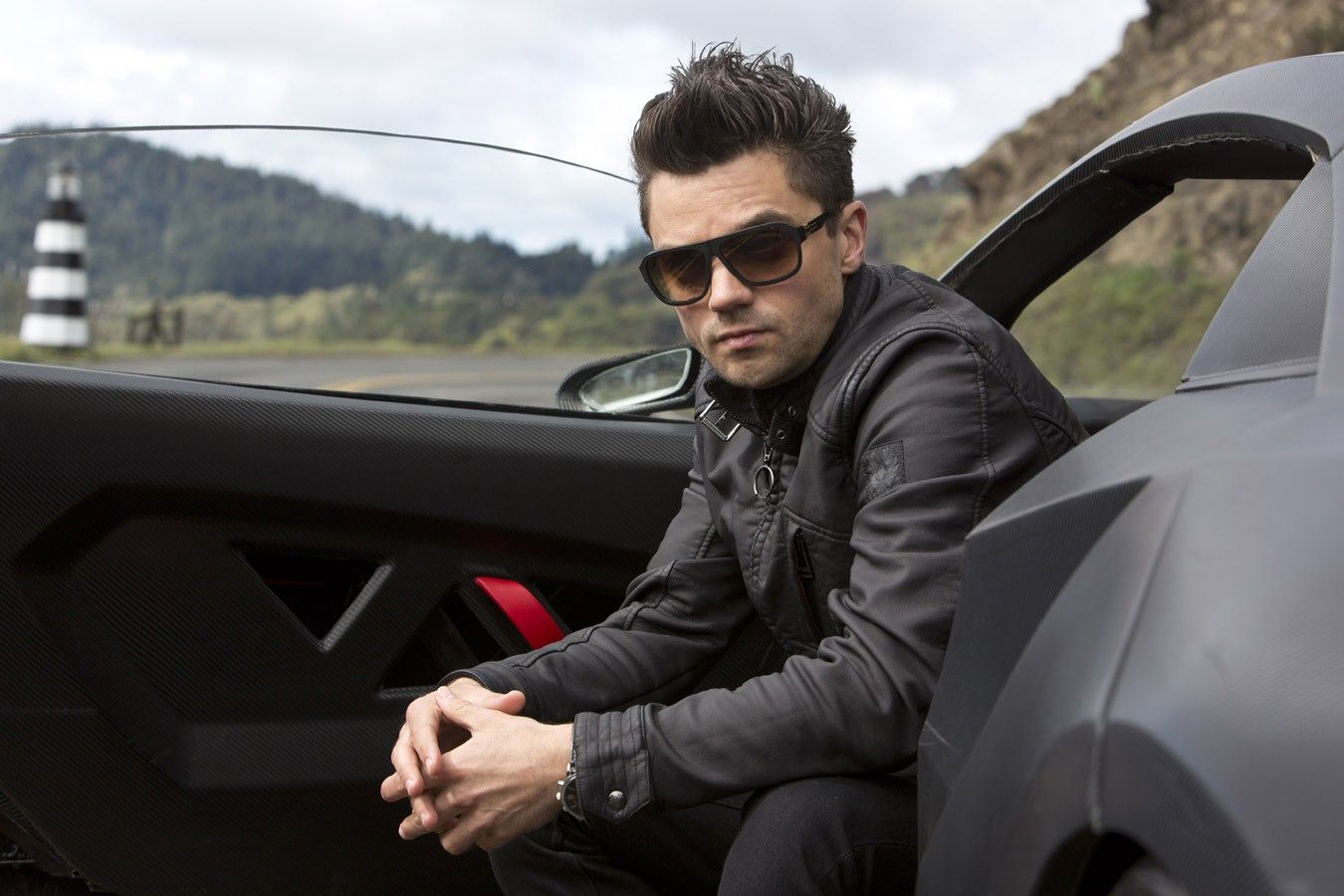It’s less because of waffling than weighing the virtues and transgressions of Need For Speed that has produced a week of critical vacillation by yours truly: Is Scott Waugh’s adaptation of the video game of the same name silly, melodramatic fun or merely a stupid failure?
The DreamWorks Pictures release indisputably provides ample evidence for both arguments, sometimes with the same talking points. But within the boundaries of a cinematic universe that worships at the twin altars of cool cars and the tortured antiheroes who drive them, Need For Speed is by and large a success, precisely the kind of high-octane melodrama that serves as a stopgap between Fast and the Furious installments while underscoring that the series, like this expert imitator, relies on a metric ton of cognitive dissonance between visceral cool and genuinely compelling storytelling.
Aaron Paul (Breaking Bad) plays Tobey Marshall, a gifted driver of extremely fast cars who languishes in obscurity while his biggest competitor, Dino Brewster (Dominic Cooper of Captain America: The First Avenger), enjoys very public success. After an unplanned race ends with the death of one of Tobey’s teammates, Dino abandons the scene of the accident, leaving his adversary to face the consequences – which include a five-year prison sentence. Upon his release, however, Tobey is presented with an opportunity to take revenge when an exotic-car dealer named Julia Maddon (Imogen Poots of Fright Night) offers to stake him in an epic, annual race in which, not coincidentally, Dino is also participating.
The only catch for Tobey is that the race is located on the other side of the United States, and he’ll be violating his parole in order to sign up. But after deciding that clearing his name is worth the risk, Tobey rounds up his pit crew and takes off for the West Coast, attracting cops and fellow competitors in equal measures as he attempts to exact some well-earned revenge against Dino.
As with virtually all car movies (much less men who worship cars), Need For Speed is first and foremost a metaphorical dick-waving contest, an advertisement for levels of masculinity that can only be proved by outracing all opponents in a car shaped more than passingly like a phallus. Consequently, much of the dialogue exists at a barely subtextual level to highlight these characters’ unwavering toughness, and their superiority to one another. While this hardly comes as a surprise to anyone who’s seen an installment of The Fast and the Furious, it’s noteworthy here mostly because it’s so relentlessly formulaic: These drivers race for one reason, and that’s to prove they’re men – and more specifically, better men than the people who eat their dust.
Thankfully, there’s real tension in most of the racing sequences with regard to who, in fact, is the most masculine, in no small part due to Waugh’s commitment to staging real races that employ minimal CGI. From the first race to the last, these cars look and feel real, and they interact with their environments as much as a dimension of the storytelling as to provoke audiences to cringe in their seats at every twist and turn. Quite simply, this ranks as some of the best driving footage in recent years, and seldom if ever relies upon scenarios, well, too complicated to stage believably, such as, say, a chase down a never-ending runway.
Imogen Has a "Need For Speed," Even if She Lacks a Driver's License
At the same time, its plot relies upon some of the most specious legal arguments ever pitted against a wrongly accused man. Given the number of onlookers and other drivers whose lives endangered during the race that lands Tobey in prison, it seems unlikely that not one of them saw three cars, not just two, on the road that fateful day. And while it eventually serves the plot for Dino to save, and moreover, never repair evidence of his culpability, it’s fairly amazing that screenwriters George and John Gatins ask us to accept that decision without ever acknowledging its implausibility.
In his first high-profile feature role, Paul does a solid job of getting underneath the character’s guilt and anguish, without weighing down the film with so much melodrama that it’s impossible for viewers to have any fun. (There’s a great moment toward the end, during a moment of vindication when rather than cheering, a cathartic tear rolls down his cheek.) But even in an anemic “girl in the boys’ movie” role, Poots is the film’s standout, managing to turn Julia into a compellingly unique weirdo whose inevitable romance with Tobey feels like a much further foregone conclusion than it might otherwise. Donning oversized sunglasses and bouncing back and forth between terror and exhilaration, Poots makes the character her own, and she demonstrates she deserves more than love-interest opportunities.
It’s probably worth noting that the racing seems very dangerous, and not just in a “Whoa, man, that’s totally risky for a stuntman” kind of way; Tobey leaves a trail of vehicular carnage in his wake that the movie never takes much responsibility for – because, hey, dude, he’s trying to clear his name! But notwithstanding that the purse for the final race includes pink slips for all the competing cars, and then the Gatins amplify the melodrama by unleashing a horde of police to stop the drivers in any destructive way possible, one imagines the filmmakers were paying a lot more attention as a whole on getting audiences behind the wheel than taking them anywhere meaningful.
In which case, Waugh’s efforts are guaranteed to entertain if the old-school car-chase movies continue to give you thrills. But given Need For Speed’s more immediate connection to the car movies of the past decade or so, not to mention the vicarious thrills of the video game on which it’s based, it’s important to know the primary difference between then and now is that this film’s predecessors focused a lot more on direction than speed – and that goes as much for storytelling as for driving.
Need For Speed opens Friday nationwide.



